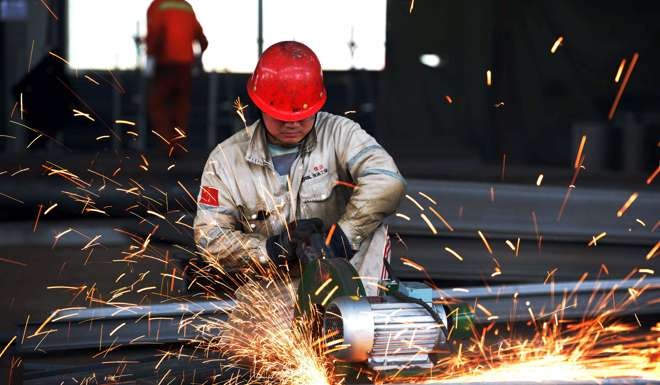
Are Chinese enterprises being taxed to death?
Zhang Jun says Chinese manufacturers will lose their edge and increasingly look for cheaper places to do business unless the tax structure is simplified and curbs put on soaring land and financing costs
Going strictly by the numbers, this doesn’t seem the case. Measured as the ratio of the government’s fiscal revenue to GDP, China’s overall tax burden is just over 29 per cent, or 10 per cent less than the global average, according to the International Monetary Fund.
China collects more taxes from producers, and less from consumers, than most developed economies
However, a recent World Bank report indicates that the total tax rate for Chinese enterprises averaged 68 per cent, placing China 12th in the world. This may be where Cao got his 35 per cent manufacturing tax figure.
China’s ‘glass king’ shatters manufacturing wisdom with move to the US
Though it is not clear how the World Bank calculated its rate, what is clear is that Chinese entrepreneurs and investors complaining for years about the heavy tax burden at home are far more inclined to agree with the bank than more favourable indices. One reason for this may be that China collects more taxes from producers, and less from consumers, than most developed economies. Li Wanfu, director of the Tax Research Institute under the taxation administration, says more than 90 per cent of all taxes and fees in China are paid by enterprises.

Why China should follow Trump’s example and cut taxes
So what is the actual tax burden on Chinese enterprises? Officially, producers must pay an enterprise income tax of 25 per cent. But many firms receive tax incentives. For example, the income tax rate for hi-tech firms supported by the government is just 15 per cent, while some small-scale enterprises pay 20 per cent. I would therefore estimate the median rate of corporate income tax at around 20 per cent.
Moreover, local governments often offer tax returns, refunds, and breaks, meaning that the burden varies greatly across enterprises, industries and regions, not taking into account the rampant tax evasion by small firms.
Local government surcharges alone take up at least 13 per cent of enterprises’ revenues ... [eroding] profit margins
That said, the perceived tax burden in China also includes non-tax expenses, including a relatively high proportion of social insurance for workers, the cost of land, resources, and financing, as well as a variety of government surcharges. Indeed, Cao cited high land costs, as well as soaring labour costs, as additional factors driving Fuyao’s partial move to the US.
Local government surcharges alone take up at least 13 per cent of enterprises’ revenues, a cost that cannot be passed on to consumers. This has contributed to the erosion of profit margins. Manufacturing surcharges amounting to nearly a quarter of profit put a further squeeze on low-profit producers.
Soaring costs force more Chinese firms to look overseas
While it is difficult to estimate the precise size of Chinese firms’ tax burden, they feel under pressure.
Given its slowing economic growth, the last thing China needs is to drive more producers away. What it does need is a more simple and transparent tax system, with a transition to more explicit and direct taxation. Taxes, duties and fees for businesses must be lowered, as should the share of social insurance paid by firms for their employees in China.
At the same time, China’s leaders must commit to curbing the soaring costs of land and financing, in order to create a more equal and competitive market. They should start by recognising that, as long as upstream infrastructure remains in the hands of often-inefficient state-owned enterprises, some downstream sectors will have to bear higher costs. Over time, such costs could damage the competitiveness of Chinese manufacturers – or drive them to friendlier markets.
Zhang Jun is professor of economics and director of the China Centre for Economic Studies at Fudan University. Copyright: Project Syndicate

